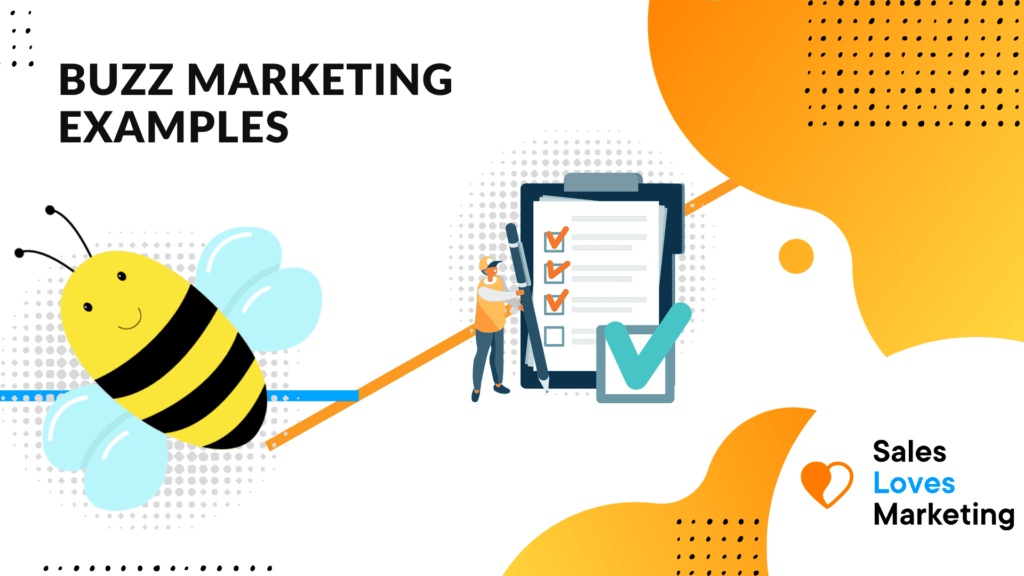How do brands get their audience excited for the launch of upcoming products and services? In order for brands to create buzz around new products and services, they use a technique called buzz marketing.
In this article we are going to define buzz marketing, discuss different types of buzz marketing, and review 5 powerful examples of buzz marketing that will help illustrate its effectiveness.
What is Buzz Marketing?
Buzz marketing is a tactic designed to create buzz around the release of new products or services through word-of-mouth marketing. There is typically a viral element to buzz marketing campaigns.
When crafting your buzz marketing campaign, the actual product or service you’re promoting must live up to the hype. If the product or service doesn’t measure up to your customers’ anticipation of its release, you’ve broken the trust they had in your brand. They’ll probably be less interested or likely to engage in future product launches too.
Different Types of Buzz Marketing
There are several different tactics that can be used in buzz marketing campaigns. Buzz marketing tactics include interactive events, influencers, viral content, and creating a feeling of scarcity. These tactics are designed to help build anticipation.
The concept of scarcity is one of the key reasons buzz marketing campaigns thrive. The fear of missing out on the “it” product or the amazing service everyone else is experiencing plays on people’s desire to fit in.
They aim to have consumers circulating the content for them, whether through word-of-mouth with family and friends, or on their social media. The idea of scarcity also drives the success of buzz marketing campaigns.
Buzz Marketing Example 1
Our first buzz marketing example includes a brand that is an expert at utilizing this technique: Apple. Through commercials, billboards, and other advertising mediums, Apple is able to create buzz around the launch of each new product.
Whether it was the latest iPod, or latest iPhone, Apple was able to create enough buzz around the next generation of products . Their campaigns were so successful they would have people waiting in long lines and sleeping overnight in tents so they could be first in line to buy their products on release day.
Buzz Marketing Example 2
The second example of buzz marketing we are going to review comes from the one and only, Starbucks. Starbucks is a powerhouse brand that has expertly harnessed their customers’ attention, hype, and feeling of needing to fit in.
As the seasons change, customers are trained to anticipate the release of seasonal drinks from Starbucks like pumpkin spice lattes and iced pineapple matcha. The brand is continually coming out with new drinks every year. They build buzz around the arrival of each new drink through influencer marketing and social media.
Starbucks has successfully made its product a popular accessory for social media pictures. The buzz that’s created from influencers, commercials, and other advertisements helps build the hype around the release of each new drink. Customers want to fit in while also not missing out on their exclusive drinks that everyone is talking about.
The coffee company is also known for intentionally misspelling customers’ names when writing them on the cup. Employees do this because it then causes customers to post pictures of their coffee cup online. This shows the rest of social media the funny experience they had that day at Starbucks. It’s free marketing and promotion for Starbucks.
Buzz Marketing Example 3
Our third powerful example of buzz marketing is Volkswagen’s promotion of the New Beetle. When Volkswagen redesigned and released an updated version of the classic Beetle, they created excitement and anticipation around this new product. Through their buzz marketing efforts, Volkwsagen was able to reestablish the cult status it had for its first 40-50 years on the market.
Buzz Marketing Example 4
The popular app, Pokemon Go, is a powerful example of buzz marketing. The Pokemon Go app took users on an in-person journey that coincided with the interactive journey users were experiencing on the app.
Along with going viral on social media and in news articles, the popularity of the app grew exponentially due to word-of-mouth discussions between consumers. The Pokemon Go app created a product that was definitely worth the hype, and the buzz surrounding it just continued to build and build to the point of virality.
Buzz Marketing Example 5
Our final example of buzz marketing is the concept of teasing Super Bowl commercials before the actual Super Bowl. It’s not a secret that one of the most engaging parts of this major football game are the commercials. Most consumers admittedly only watch the Super Bowl for the commercials.
This tactic is used across a variety of big brands who can afford to advertise in the Super Bowl. It helps build buzz for each brand’s individual commercial as well as the Super Bowl as a whole. It increases views of each brand’s commercial, and it also makes consumers more excited to watch the Super Bowl and see their favorite brand.
Conclusion
When it comes to buzz marketing, scarcity, hype, and word-of-mouth are key. Through common tacts like interactive events, viral content, and partnering with influencers, brands can create buzz among consumers. The most successful buzz marketing campaigns go viral, boosting the anticipation of the launch of a new product or service.
After reviewing 5 powerful examples of buzz marketing, what ideas do you have for promoting your brand’s next product launch? How can you harness the power of social media to help create buzz for your brand?
